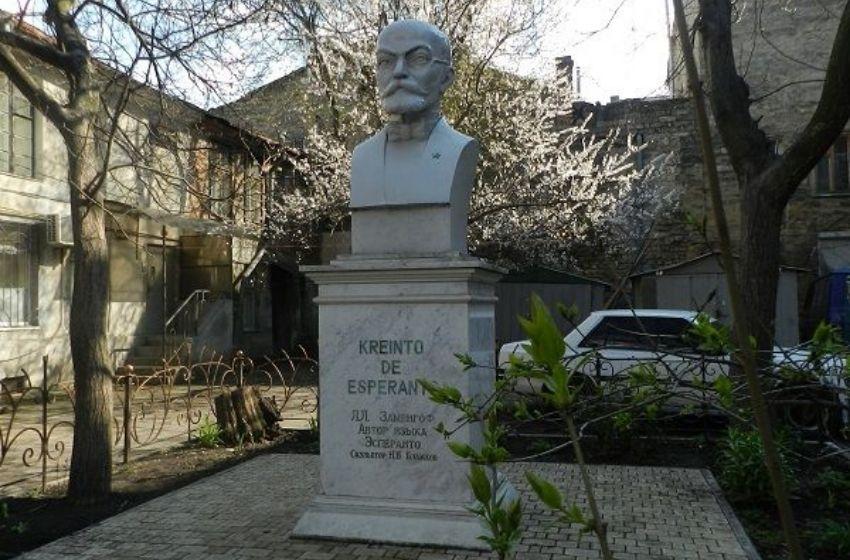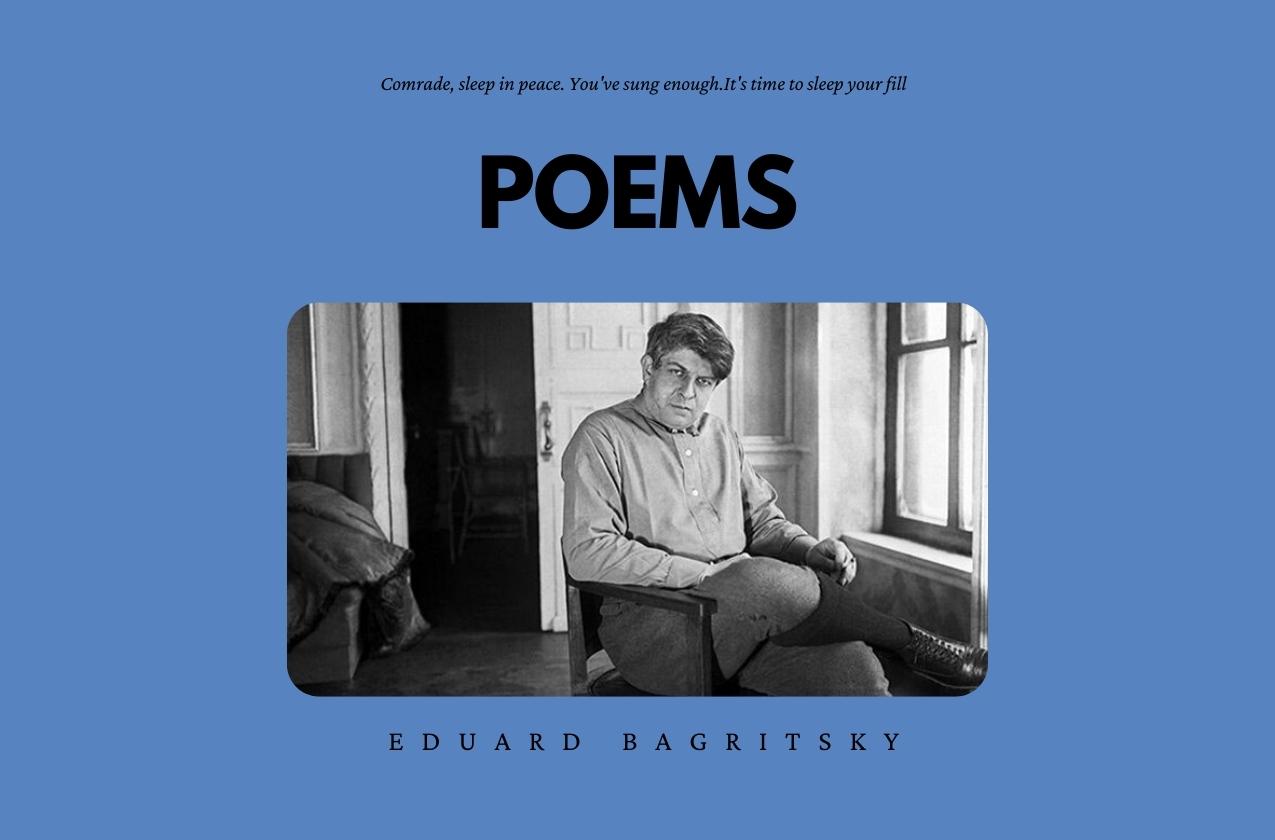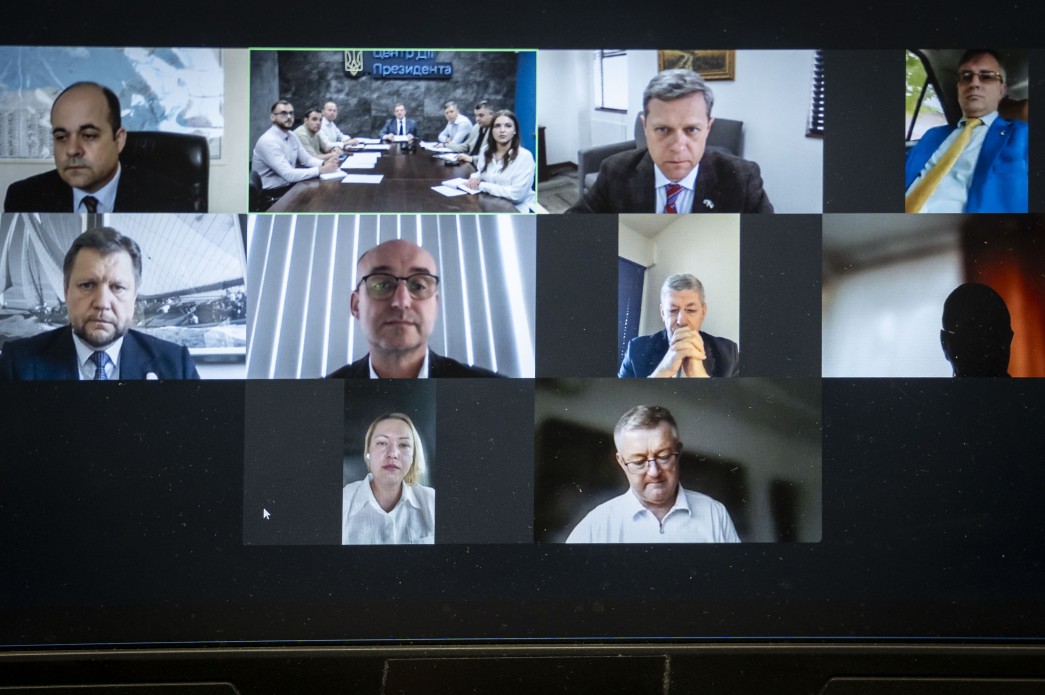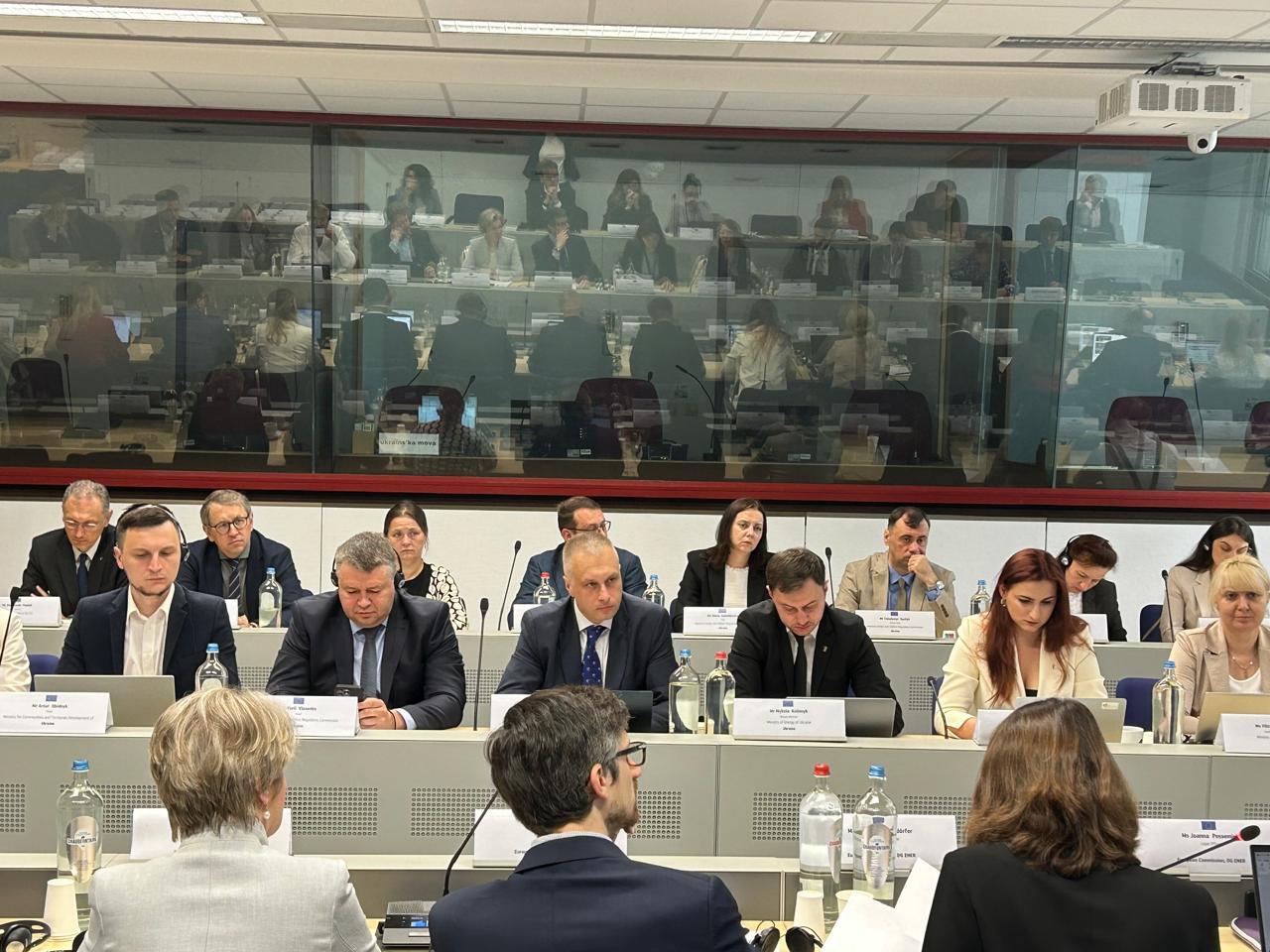The Monument to Ludwik Zamenhof, located in Odessa in a courtyard at Deribasovskaya street n.3, was installed in 1959 by the sculptor is Nikolay Blazhkov. It is one of the first in the world and the only monument in Ukraine after the creator of the Esperanto language.
In the 1950s, the sculptor Nikolai received an order from Polish Esperantists (somebody say Bulgarian) to create a bust of Zamenhof, but for unknown reasons, the buyers did not take away the sculpture. Then, the bust was installed in the courtyard where Blazhkov lived, on the site of the well.
When local authorities asked him whom the sculpture was dedicated to, the sculptor answered his father. This precaution was due to the fact that the Esperanto movement was outlawed in the USSR. Since the mid-1930s, Esperanto speakers had been repressed as "Trotskyists" and "spies".

The monument was made of plaster, a very fragile material, so it had to be frequently restored. In 1997 and 2005, a restoration was carried out by members of the Verdajo Esperanto Youth Club. In 2008, within the framework of the programme for monumental art, the complete restoration of the bust was undertaken on behalf of the Odessa City Council’s budget, with a cost of 100 thousand hryvnias. The result was a concrete pedestal faced with marble, paving slabs, forged metal fencing, lawn. The bust was covered with a special compound resembling marble.
The monument is beloved by Esperantists. Foreign delegations and tourists come to visit it. On December 15, the birthday of Ludwig Zamenhof, Esperantists around the world celebrate Zamenhof Day (in Esperanto - Zamenhofa Tago). On this day, it is customary to give each other gifts (as a rule, Esperanto books), visit places associated with the "Esperanto culture", read thematic lectures.
Russian Esperantist Yuri Davydov wrote a verse about the monument
The descendants of Zamenhof did not forget -
There is one monument for the whole Union!
So touching Genius was loved,
That even in the wilderness of the yard there was a bust!
Let it not be seen from the street - "so", they say, "must!"
Who was the creator of Esperanto?
Ludwig (Lazar Markovich) Zamenhof, born in 1859 in Bialystok, Grodno province of Russian Empire (today Poland), was a doctor and linguist of Jewish origin. His town was inhabited by Poles, Germans and Belarusians, but the majority of the inhabitants were Yiddish-speaking Jews. Zamenhof believed that the main reason for hatred and prejudice lay in mutual misunderstanding caused by the lack of one common language, as it was for the Tower of Babel. That complex interethnic relations prompted the son of a school teacher to create a new language that would play the role of a neutral means of communication between people belonging to different nations and speaking different languages.

While still in high school in Warsaw, Zamenhof attempted to create his new international language: real, emotionally rich, capable of uniting humanity. He studied English, German, French, Latin, Greek and other languages, ​​and decided that the new language should have had a relatively simple grammar with extensive use of suffixes and prefixes to form derivative words.
Zamenhof graduated from high school in Warsaw, studied medicine in Moscow and in Warsaw. He worked as an ophthalmologist in Grodno for four years, then moved again to Warsaw.
In June 1887, under the pseudonym "Dr. Esperanto", he published the brochure entitled “Dr. Esperanto. International language. A preface and a complete textbook" ("D-ro Esperanto. Lingvo internacia. AntaÅparolo kaj plena lernolibro"). The first issue was in Russian; a little later, editions in English, German and French were published.
The new language immediately became popular and spread rapidly throughout Europe. The first Esperanto language circles in the Russian Empire appeared in St. Petersburg and Odessa.
For Zamenhof, this Esperanto language was not just a means of communication, but also a way of spreading ideas. He wanted to preach the idea of ​​peaceful coexistence of different peoples and cultures. In 1905, Zamenhof was awarded the Order of the Legion of Honour. He attended the First World Congress of Esperantists. He became the informal leader of the Esperanto movement; Esperantists called him "Maestro". Lazar Markovich Zamenhof died in Warsaw, on April 14, 1917.
Streets in more than 15 cities around the world are named after Zamenhof; monuments have been erected to him in Poland, Austria, Lithuania and ... Odessa.
About Esperanto language today
Thousands of people of all ages, political views and religious beliefs study the international language Esperanto. Most Esperanto speakers live in Europe, where most of the Esperanto events take place.
Hundreds of new translated and original books in Esperanto are published every year. Esperanto publishing houses exist in Russia, Czech Republic, Italy, USA, Belgium, Netherlands and other countries. Also, about 250 newspapers and magazines are published in Esperanto. Esperanto enjoys the support of a number of influential international organizations. UNESCO adopted in 1954 the resolution, in which it expressed support for Esperanto, the goals of which coincide with the goals of this organisation. The popular search engine Google also has an Esperanto version. As of May 10, 2013, the Esperanto section of Wikipedia contains 179,899 entries (27th place).
All major sacred books were translated into Esperanto: the Koran (La Nobla Korano), Buddhism (La Instruoj de Budho). The Bible was translated by Zamenhof himself.
Radio Vatican broadcasts in Esperanto, and since 1910 the International Catholic Esperanto Association has been active. The Holy See has officially authorised the use of Esperanto during divine services. In 1991, Years Pope John Paul II first spoke to over a million young listeners in Esperanto.
Ayatollah Khomeini encouraged Muslims to learn Esperanto and praised its use as a medium for better understanding between peoples of different religions.
For the Japanese religious movement “Oomoto-kyo†Ludwig Zamenhof is a saint. Their slogan is: “Unu Dio, Unu Mondo, Unu Interlingvo†(“One God, One World, One Language of Communicationâ€).
Won Buddhism - the branch of Buddhism that originated in South Korea, actively uses Esperanto; their main sacred texts of Won Buddhism have been translated into Esperanto.
In the USSR, Esperanto was actively disseminated in the 1920s as the "language of the world revolution†(until 1930s). At thats time, even the inscriptions on postal envelopes were duplicated in two languages, Russian and Esperanto.






















